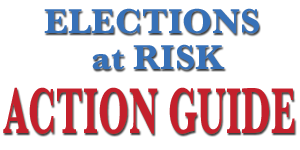Help Prevent Machine and Ballot Shortages
Check to see if enough paper ballots will be provided at the polls in your community. If paper ballots are used for voting (including emergency paper ballots to be used in case electronic machines fail), find out the county's policy regarding number of ballots provided to each precinct. The number should be a percentage of the number of registered voters, and this percentage should be consistent throughout the jurisdiction. Check your state elections code to see if there are specific guidelines for the number of ballots to be provided, or call your local elections office.
Note that if the voter rolls have recently been "scrubbed" of people who have died, moved away, etc., the percentage of ballots needed per 100 registered voters should be increased, as more of the names on the list will be active voters.
Assess electronic voting machine and voting station allocation for equality. If electronic voting machines are used, find out how many machines are scheduled to be provided in each polling place. (Check number of private polling stations -- “voting booths” -- as well.) Check to see that the number of machines provided is both proportionate to the number of voters and is sufficient. In other words, precincts with more voters should have proportionally more machines.
Work with your local elections official/department to ensure that they’re using best practices. Introduce them to this Polling Place Resource Planner tool.
